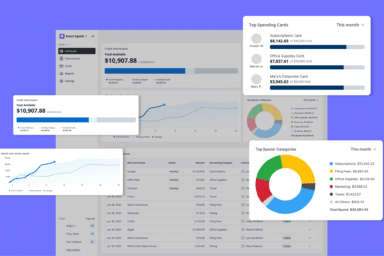ABA Report: Lawyers Are Relying On Online Tools and Technology More Than Ever Before
Sep 1, 2021
| 5 min read
The Report also includes a lot of interesting data about lawyers’ use of technology. Some of the most notable statistics from this year’s Report provide insight into lawyers use of online legal resources, their cybersecurity efforts, and the hardware and software choices that they’re making. No matter how you look at it, the data from the Report offers evidence of an important lesson for lawyers: Technology is no longer an option, and instead is a pivotal part of a successful law practice.
Online legal resources
The legal research statistics from this year’s Report are particularly interesting, in part because legal research was one of the first law firm processes to be impacted by technology. The transition to online legal research occurred decades ago, and since that time legal research efficiency has increased significantly. Despite the increased efficiency, according to the Report, lawyers still spend a big chunk of their time – 18% of each workday – conducting legal research. For nearly a third of the lawyers surveyed, the starting point for most legal research projects is a free search engine such as Google. Another third (30%) turn to paid online search tools before conducting any other type of legal research.
Lawyers also obtain most of their daily legal news online from a variety of different sources. Nearly half of the lawyers surveyed shared that Law 360 was their top legal news source (41%). Next was the Wall Street Journal (22%), followed by Bloomberg Law News at 8% and Bloomberg News at 6%. Other news sources reported included ALM (4%), Reuters (3%), Westlaw Journal (2%), and Courthouse News (2%).
The online world has also made its mark when it comes to legal marketing. Gone are the days of relying solely on the Yellow Pages, park benches, billboards, and costly television ads for lawyer advertising. In 2021 – especially while we’re in the middle of a worldwide pandemic – the internet is where it’s at. According to the survey results, event sponsorships, which are both virtual and in-person, are the top way that lawyers are marketing their firms (48%), followed by three web-based marketing opportunities: LinkedIn (42%), email (41%), and Facebook (33%). Other less popular marketing methods included print (21%), Twitter (16%), and direct mail (14%).
Cybersecurity
Next up, cybersecurity. In 2021, lawyers are more aware than ever of the importance of implementing strong cybersecurity measures. The reason for this newfound vigilance is due to the increase in cyberattacks in recent years. Notably, however, the increased focus on cybersecurity is paying off, and the lawyers surveyed reported lower numbers of viruses, spyware and malware overall.
Specifically, the data from the Report showed that 36% of lawyers shared that their law firm’\s had been affected by a cyberattack in 2020, down from 40% in 2018 and 43% in 2017. Steps taken by law firms to prevent such attacks included spam filters (81%), anti-spyware (76%), firewalls (74%) and popup blockers (72%).
Another noteworthy finding from the survey was that solo attorneys fared better than their larger firm counterparts when it came to cyberattacks. According to the Report, only 19% of solos reported that they’d experienced a breach compared to 42% of lawyers from firms with 10 to 49 lawyers.
Hardware And Software Technology Choices
Finally, let’s turn to the technologies used by lawyers, starting with hardware. When it comes to smartphones, the results showed that the most popular choice is an iPhone, with 79% of lawyers surveyed reporting that it’s their smartphone of choice. Android phones came in second at 18%, and the once-popular BlackBerry is used by only 1% of lawyers surveyed.
Lawyers are also relying on mobile tools more often than ever before, which isn’t surprising given the increase in remote work due to the social distancing requirements of the pandemic. According to the survey results, the use of laptops by lawyers has increased significantly in the past year, with nearly half (47%) of lawyers reporting that their laptop was their primary work computer, compared to 39% in 2017. In comparison, less than half (49%) of lawyers now use desktops as their main work computer compared to 60% in 2017. Finally only 1% of lawyers use a tablet as their primary computer.
Related: [Blog Post] Now is The Time to Transition Your Firm From Premise-Based Legal Software to the Cloud
Next up, let’s take a look at the legal software statistics. As part of the survey, lawyers were asked about the legal software available at law firms. The software that they reported was most often available in their firms was conflict checking software (63%), followed by case management or law practice management software (63%). Other types of software that lawyers reported were offered in their firms included specialized practice software (37%) and rules-based calendaring software (38%).
How does your firm’s use of technology compare? Is your law firm relying on online tools and technologies more than ever before? For even more ideas on how to use technology to streamline your law firm, make sure to download this FREE guide: Tips for Automating Your Law Firm.


